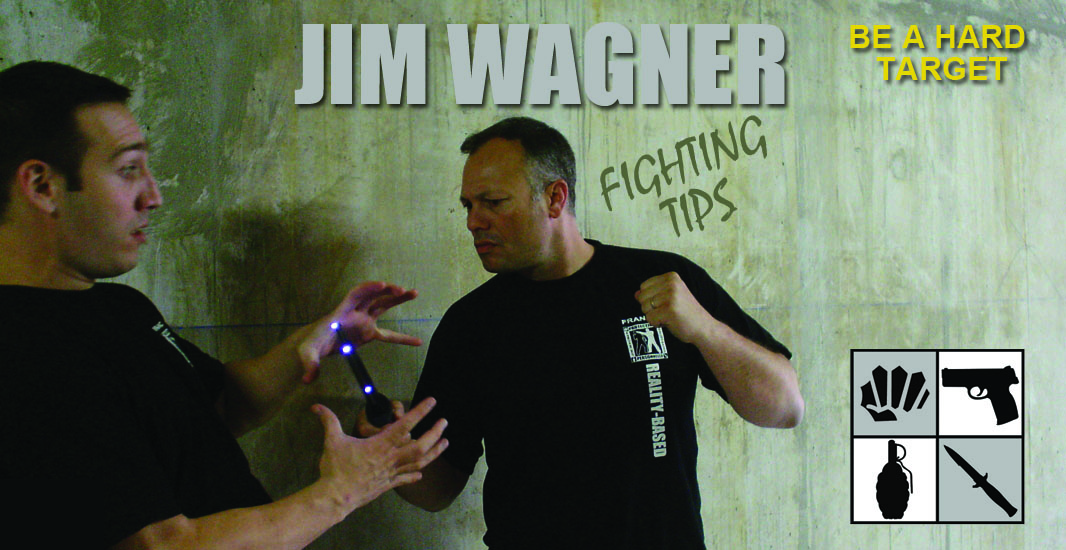Did you know that law enforcement agencies and military units are doing away with martial arts. Well, actually they’re doing away with just the terminology; the kicks and punches will always remain. The term “martial arts” is being replaced by the word “combatives.” And, just what exactly is combatives?
The word combatives, when used by cops, SWAT team, and military Special Operations refers to unarmed combative subjects. If somebody is physically resisting we refer to them as a “combative.” Add an “s” to the word and essentially you have a whole system that few civilians know about. I should also mention that the training includes techniques involving various weapons as well should a combatives situation degrade into lethal force or visa versa.
Have you noticed lately that there are a lot of martial arts instructors out there telling people that they instruct the Navy SEALs, Army Special Forces, Rangers, SWAT teams or whoever. They do this to boost student enrollment and to sell videos, but anyone making the claim that they instruct “elite teams” should come under suspicion. That’s not to say that there are not legitimate claims out there, but these teams are very tight communities that few civilian instructors ever penetrate.
It is unlikely that a civilian instructor, who has never served or who has never worn a badge is teaching actual teams. For one thing, civilian instructors lack the training and experience needed to effectively train troops and cops. Secondly, these teams do not generally trust outsiders for those very reasons. Most of these self-appointed “teachers of the elite” may have indeed taught a few individuals from such teams, the ones who came to check out their training, but it is not SOP (Standard Operating Procedure) to bring in civilians to teach various levels of force. It would be a legal liability to any agency or unit who did so. An instructor has to be able to be cleared “vor dire” (deemed to be an expert) by the courts and stand behind his training if challenged. The only way that the instructor can do this is if he himself has the experience and training to back it. A civilian without a combat military or law enforcement background would be eaten alive by a defense attorney in court. That’s why you don’t see non military or law enforcement combatives instructors in this business. Anyone who tells you otherwise had come up with some hard evidence before you hand over your hard earned money. With that said let’s talk about legitimate combative programs for law enforcement and the military.
In truth there are only a handful of legitimate combatives programs instructed in the United States, and all of them are taught by sworn officers, active duty military personnel or former of the mentioned.
The US Marines & US Army have their own combatives courses and are generally taught to combat personnel. Each are very comprehensive, easy-to-learn, and they cover all of the basics: punching, kicking, head butts, elbow & knee strikes, takedowns and some limited grappling. Unfortunately, few units maintain these skills for very long. Combatives is given a low priority even within the Special Forces. Unlike some countries where ongoing combatives training is mandatory, it is pretty much up to the individual in our military to keep on top of these perishable skills.
Law enforcement officers first learn their fighting skills in a law enforcement academy. The type of combatives taught falls under two categories: Arrest & Control Training (ACT) and Impact Weapons Training. At each perspective academy the recruit learns the basics: punching, kicking, controlling techniques, come-alongs, grappling and baton use. Some academies have exercises where they have students fight each other full-contact while wearing protective gear. Most academies, unfortunately, have eliminated this kind of training from their curriculum for fear of somebody getting injured. Weak logic considering what they really face in the streets. Instead they have watered down forms of combatives which gives these new recruits a false sense of security. Although they are ineffective the administration can say that they are meeting their legal obligation to “officer safety.”
Once out of the academy every agency or department has their own Training Division or Training Officer. Some have great combatives programs and others are deficient or practically nonexistent altogether. The quality of training depends on who’s running the show at the time. Most combatives courses are taught in-house. The instructors who carry out this duty usually have the title of Defensive Tactics Instructor; a titles which is slowly being phased out also. It’s their job to keep everybody up-to-date on the latest tactics, applicable laws, conformity to the agencies’ policies, and to stay within budget.
If you’re an outsider looking in you would probably think that most agencies and departments would be really “into” combatives training, but that’s a misconception. It takes motivated instructors with a lot of street experience who can effectively teach a truly comprehensive combatives course. There’s just not a lot of them out there who can shoulder the legal responsibilities of what they teach. That’s why agencies and departments, and even military units (Federal law requires limited exchange of information and training between military and law enforcement), enrole their personnel into combatives programs hosted by established training organizations. These are private corporations run by active and former law enforcement/military instructors who’ve all had real world experience (the term “real world” refers to those who actually use, or have used, their skills in real military or law enforcement operations. Simply attending some trainging does not count). The most widely known training organizations that have combatives programs are Heckler & Koch, Inc. International Training Division on the East Coast (21480 Pacific Boulevard Sterling, Virginia 20166-8903), Chuck Habermehl with CQB, Inc. down in the Southeast (P.O. Box 895578 Leesburg, Florida 34789-5578), and HSS International on the West Coast (http://www.hssinternational.com). There are a few smaller ones, but not as widely known. In all fairness to you I’ll tell you up front that I developed HSS International’s Combatives program and instruct it, along with other tactical courses, when I’m not pushing around a police car 40 hours a week. However, each of the programs that I have mentioned are worth the investment, and I highly recommend them – even if they are competitors.
Beside the obvious benefit of self-defense, why do law enforcement and military personnel study combatives? The reason is to reduce liability. Let’s start with law enforcement first.
When a law enforcement SWAT team breaks down the door to somebody’s house and makes entry the operators (a term used for team members) are armed with submachine guns (typically with HK MP5s or 9mm Colt CAR15s) or handguns (9mm, .40 caliber or .45 caliber weapons of various makes and models). If an unarmed combative subject fights the officers the officers will not use lethal force generally (there are exceptions to the rule, but ones I am not privileged to give out). The operators are armed to the teeth, but they must be able to quickly switch (or as we say, “transition”) from their weapons to combatives techniques. This brings up a good point. Contrary to what some people may think, an operator is not going to strike the resistor with the muzzle or butt of the weapon. Such a move, although it looks dramatic in the movies, can lead to an accidental discharge (AD) which is not only a tremendous liability, but can lead to a fellow team member getting shot. Instead, they transition to other means: impact weapons (baton, ASP, PR24), chemical agents (pepper spray, mace, CS gas), or combatives. The idea is to use the appropriate amount of force to subdue the person. If an entry team uses a “reasonable” amount of force they reduce the liabilities in turn. A good combatives course teaches operators the appropriate amount of force to apply in various situations.
Even though the military operates by a whole different set of rules of engagement the role of the military is expanding to include peace keeping missions. Such missions require a greater integration of police tactics. Counterterrorism teams, FAST teams, and military police SWAT teams also rely upon combatives programs to avoid unnecessary casualties in hostage rescue operations, dignitary protection, and other related missions. So, what used to get you shot in the old days not may only require a kick, hit, or thump or two and a dog pile.
Now that you know what combatives is, and why combatives are taught, let’s look at the nuts and bolts as to what is actually taught.
The combatives course I instruct is taught in seven phases, and is generally the same for other instructors as well. 1. Medium range (punches and kicks) 2. Close range (knee & elbow strikes, head butts, pushing and pulling) 3. Takedowns (control holds, sweeps, trips and throws) 4. Ground fighting (grappling, defensive techniques and strikes from the ground) 5. Weapon retention (keeping the suspect or enemy from taking away your own weapons) 6. Lethal force transition (techniques against an armed resistors) 7. Team tactics (responsibilities and team coordination) 8. Scenario training (subduing combative instructors, who are wearing protective gear, using full-contact techniques while operators run through tactical problems).
The Israeli arts in the U.S. today
Is what is being taught today in the United States genuine Israeli military-based martial arts or not? The answer is – that depends on who is teaching it.
The downside to Krav Maga™, like any large martial arts organization, is that some instructors are “locked on” while others may tend to “water down” the system and go outside of Devine’s doctrine. Some instructors simply do not have the “real world” experience needed, such as law enforcement or combat military service, which is an absolute must in Israel to qualify the art as militarized. However, if you’re out there shopping around for mainstream Krav Maga™ there’s one easy way to make comparisons – buy their videos. The organization made several well-produced videos that lay out the fundamentals. You can obtain more information about Krav Maga™ from their website www.kravmaga.com
Alon Stivi of Dennis Hisardut® is a man who teaches his craft based on hard earned experience. A former Israeli paratrooper and Master Sergeant, Stivi fought in the Israeli-Lebanon War (1982), and has had some other hair-raising missions. He is also an expert on corporate security and terrorism awareness, and he is often featured in various Fortune 500 magazines and television interviews. Stivi is a superb athlete, and anyone who trains under him cannot help but get into good shape and in a proper combat frame of mind, because he always throws in a healthy dose of Israeli military calisthenics and drills along with fighting techniques. Plus, when you hear Stivi’s thick Hebrew accent, as he pushes you to your limits, you actually feel like you could just as easily be training in the middle of Israel.
Dennis Hisardut® of America, sanctioned by Dennis Hannover himself, is much smaller in scope than that of its Krav Maga™ competitors, but the quality of instruction is just as good. On the downside, some instructors under Stivi do not have the charisma that he does. You can obtain more information about Dennis Hisardut® on their website www.hisardut.com
If you are interested in studying Special Forces Kapap you must be an active member in law enforcement, corrections, probation or the United States military. The only organization authorized by the Israeli government to teach this system is HSS International. The most recent seminars were held in Los Angeles and Dallas. More police/military seminars are scheduled for both the West Coast and East Coast. You can obtain more information about Kapap on two different websites: www.jimwagnertraining.com or www.kapap.net For general information on the Israeli special forces here are some recommended sites: www.isayeret.com, www.specialoperations.com, and the official Israel Defense Force website: www.idf.il




